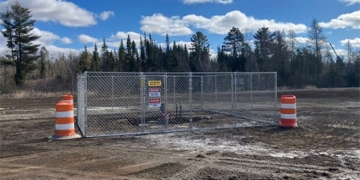The climate on Earth is often variable and cyclical, suggesting that the world in the future may experience climates similar to those during the age of the dinosaurs.
Modern humans have increasingly focused on the state of the atmosphere, beginning in post-industrial England, initially by monitoring particulate matter in the air, later by assessing the state of the ozone layer, and now by concentrating on carbon dioxide (CO2) levels in the atmosphere. Through these efforts, we can better understand how the environment and climate of Earth are changing.
The truth is that Earth’s atmosphere is always changing. By studying the evolution of Earth’s atmosphere during the age of the dinosaurs, we can speculate about the fundamental changes that the planet’s atmosphere will undergo in the future world.
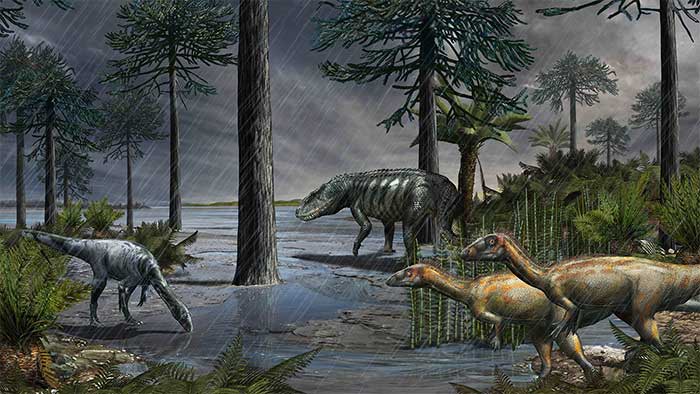
Dinosaurs once dominated our planet for millions of years. But then a massive meteorite struck, turning them into “ancient creatures” – at least that is the conclusion of science to date. (Image: ZME).
The question we are currently facing is whether these changes are natural or human-induced. In fact, modern humans are closely related to this, and it is crucial to determine whether these changes are good or bad.
Most people believe that global warming signals disaster. By looking at Earth in the past, we can gain a better understanding of the future. What was the composition of the atmosphere during the age of the dinosaurs? How did the air during the age of the dinosaurs differ from our air today?
1. CO2 Levels
According to the National Oceanic and Atmospheric Administration (NOAA), the current CO2 level in the atmosphere is 417 parts per million (ppm). This figure is higher than it was in 1900 and has been steadily increasing since the Industrial Revolution. However, this figure is surprisingly low compared to what scientists have discovered in the distant past.
Calculations by scientists suggest that during the Late Triassic period (234 million years ago), carbon dioxide levels could have reached up to 6,000 parts per million. This figure aligns with estimates from other studies indicating that carbon dioxide levels during this period were approximately 14 to 16 times higher than current atmospheric levels.
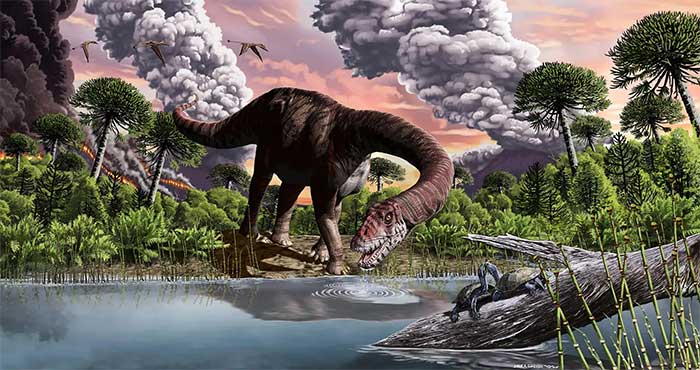
Scientists have determined that a series of volcanic activities produced carbon dioxide levels significantly higher than today’s. (Image: Zhihu).
Millions of years ago, the reason for the atmosphere being filled with carbon dioxide had nothing to do with fossil fuels or human development; instead, it was related to the state of the oceans.
During that time, the oceans were massive carbon reservoirs, and changes in the ocean’s balance prevented them from absorbing carbon. As dinosaurs roamed the continents, the oceans were unable to absorb carbon from the atmosphere.
2. Oxygen Levels
The oxygen levels during the age of the dinosaurs were also much higher than today (currently, we have 21% oxygen in the atmosphere). Samples from 80 million years ago show that the atmosphere contained 30 to 35% oxygen before the asteroid struck Earth.
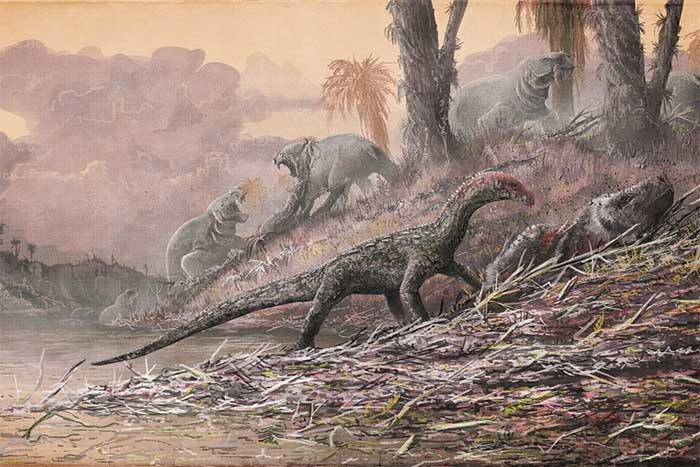
Prehistoric Earth was a vast, uniform landmass with a thriving plant life. This expansive habitat, combined with high oxygen levels in the atmosphere, is believed to have contributed to the development of large animal sizes. (Image: Zhihu).
This also means that dinosaurs lived in an environment with high oxygen levels. Interestingly, atmospheric oxygen levels fluctuated as much as carbon dioxide levels did. After the asteroid impact about 66 million years ago, oxygen levels in the atmosphere gradually decreased to today’s levels.
Long ago, Earth’s oxygen levels were nearly zero, but due to geological and biological processes, oxygen began to accumulate in significant amounts. While oxygen is an essential component of modern life, it also contributed to mass extinction events during that time.
3. Temperature
During the Cretaceous period (100-66 million years ago), temperatures were 5 to 10 degrees Celsius higher than today. Higher temperatures meant higher sea levels. In some areas, sea levels were 100 meters higher than today, and in most other regions, sea levels were 30 to 75 meters higher than modern sea levels. During this period, there was very little ice on Earth. Ice caps at the poles were almost non-existent, except for the tallest mountains at that time.
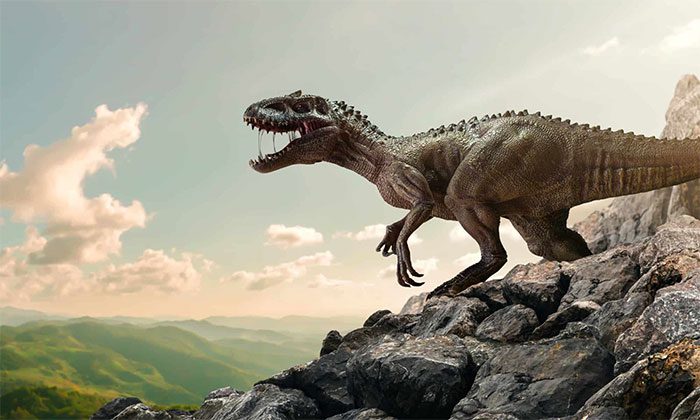
Researchers warn that if humanity continues to exploit fossil fuels across the planet until 2250, we may face CO2 concentrations not seen since the Triassic period 200 million years ago. By 2400, CO2 levels could exceed any limits recorded in the geological record. (Image: Zhihu).
4. A Glimpse into Our Future!
An ancient proverb states that history repeats itself. Some atmospheric conditions found in the Cretaceous period have led scientists to predict that Earth may resemble that period in the future due to climate change.
At that time, if humans have not become extinct, they will experience life on a hotter planet, with minimal sea ice, higher carbon dioxide levels, and more extreme weather.
In simple terms, summers will be hotter, sea levels higher, and storms more intense. While all this may sound dire compared to today’s climate conditions, our planet has been through such phases before.
However, the biggest difference for Earth in the Cretaceous period is that humans did not exist. Therefore, the climate in the future may evolve positively or negatively depending on how we perceive the future.


















































